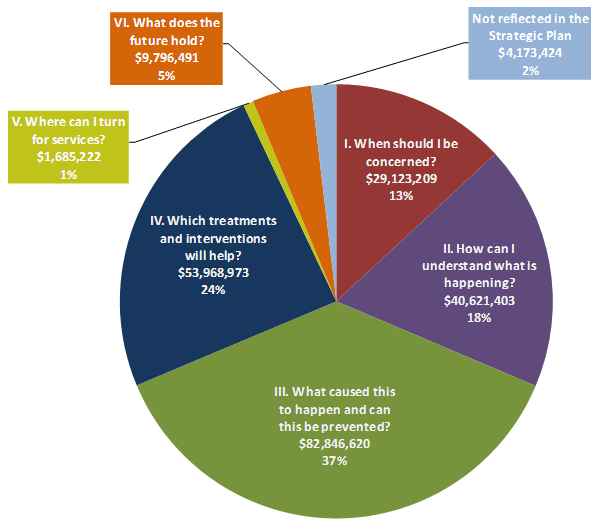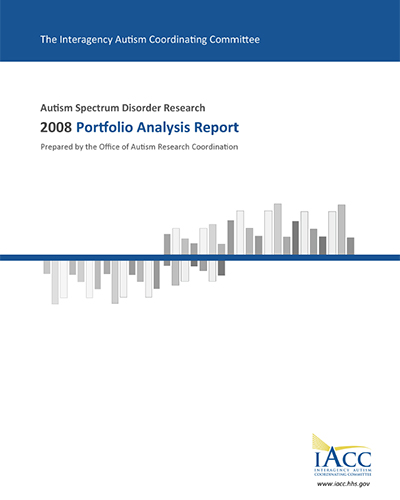Portfolio Analysis Report
IACC Autism Spectrum Disorder Research
2008
To better understand what areas of research were funded in 2008, projects were mapped to the corresponding questions in the 2009 Strategic Plan. Figure 2 illustrates the breakdown of the research funding according to the Plan's six questions related to diagnosis, biology, risk and protective factors, treatments, services, and lifespan issues. Identifying how current research investments correspond to the Plan will help to understand the current main areas of focus in the field, as well as areas that are currently underdeveloped. In 2008, the largest proportion of research funding (37%) related to the question of ASD causation: "What Caused This to Happen and Can It Be Prevented?" Research on treatments and interventions received the next largest investment with 24% of total funding. Understanding the underlying biology of ASD received 18% of funding and research addressing diagnosis received 13%. The two areas of the Plan that received the least amount of funding related to services research (1%) and research on lifespan issues ("What Does the Future Hold"), which includes transitioning into adulthood (5%).
2008 ASD Research Funding by Topic Area (Defined as Questions in the 2009 Strategic Plan)
(Total ASD funding = $222,215,342)

Figure 2. In 2008, the largest proportion of research funding (thirty-seven percent) was devoted to risk factors for ASD reflected in the question: "What Caused This to Happen and Can It Be Prevented?" Twenty-four percent of the research addressed interventions and treatments, eighteen percent related to the underlying biology of ASD, and thirteen percent related to diagnosis. Research on services and lifespan issues received the smallest proportion of funding.




